I wasn’t intentionally seeking it out. But when the glint of metal caught my eye, I had to investigate further.
I was on a hike up two Munros near Torridon on Beinn Eighe’s western summits – Spidean Coire nan Clach and Ruadh Stac Mor.
Having completed both, my friend and I descended a slippery, vertigo-inducing scree chute into magnificent Coire Mhic Fhearchair, one of the finest corries in Scotland.
It was as we approached a burn flowing into a lochan, in the shadow of the towering Triple Buttress, that we spotted the remains of the crashed Lancaster bomber.
At first, we weren’t convinced by what we were looking at – the carcasses of wings or parts of the craft’s fuselage?
The more we looked, the more we found – sections of undercarriage rested on their sides in bog; strips of metal with holes bored into them lay scattered around the burn; miscellaneous chunks of steel rose up from tussocks of heather.
Setting for tragic air crash
We had stumbled across one of the most well-known wreck sites in Scotland.
On March 14, 1951, a Lancaster bomber crashed below the summit of Coinneach Mhor – one of Beinn Eighe’s tops – into the cliffs of the Triple Buttress.
The bomber had been converted for maritime patrol duties, and the crew were on a training exercise.
All eight men on board, stationed at RAF Kinloss in Moray, died.
The pilot was flight lieutenant Harry Reid DFC, aged just 29. His crew were all under 30, the youngest, Sergeant Wilfred Beck, just 19.
The alarm was raised by a boy living in Torridon who saw a red flash in the sky when he looked out his bedroom window.
It took RAF rescuers, assisted by a Royal Marine mountain leader, three days to find the wreckage.
Difficulties in recovering the bodies over several months – the rescue team was hampered by treacherous terrain, deep snow and appalling weather – led to the formation of RAF Mountain Rescue.
What happened to the aircraft?
Most of the wrecked Lancaster was understood to have been destroyed in a later controlled explosion, but sections of wing and its Rolls Royce Merlin engines remain.
A memorial plaque on one of the propellers recalls the accident.
After the last body was recovered – on August 27, more than five months after the crash – the team sent the large pieces of the fuselage and wing hurtling down the gulley.
It later came to be known as ‘Fuselage Gulley’.
In December 2008, a climber’s fall during an avalanche was broken by a propeller from the plane. He survived the incident, but was badly injured.
Mixed emotions
It’s a sobering feeling to come across any crash site, and it’s hard to balance the harsh reality of such a tragedy alongside the sheer awesomeness and stunning beauty of the location.
The corrie is essentially a huge amphitheatre, surrounded on three sides by the mountains Sail Mhor, Coinneach Mhor and Ruadh Stac Mhor.
But the most striking feature has to be the Triple Buttress, three sandstone buttresses, or spires, capped by quartzite cliffs.
I found it a great effort to tear my gaze away from this dramatic rock formation, and sat down on the banks of the glassy loch to take it all in.
It was getting fairly late in the day and we still had a good two hours of walking to make it back to our cars.
Munro adventure
While it’s of course possible to do a “there-and-back” to Coire Mhic Fhearchair, we decided to visit the spot as part of our two Munro extravaganza.
We had started walking early in the morning, deciding to do the ‘classic circuit’ of Ruadh Stac Mor and Spidean Coire nan Clach anti-clockwise, anticipating that the hellish scree chute would be easier to descend than ascend.
We set off in mist and fog, which didn’t do a great job of shifting by the time we reached the 993m summit of Spidean Coire nan Clach.
The crest is worryingly narrow, with steep, rocky drops to one side, but if you stick to the vague path, you should be fine.
Just before you reach the top you need to scramble up a quartzite ‘staircase’, and when this is wet, it can be dangerous slippery.
Once we reached the cairn, we didn’t see much, thanks to the thick clag, but there’s apparently a cracking view over the eastern summits of Beinn Eighe.
Glad to descend to a grassy bealach, it was here that we were blessed with our first views of the Triple Buttress.
Breath-taking landscape
By the time we reached the summit of 1010m Ruadh Stac Mor, the mist had lifted, and views opened up to reveal a breath-taking landscape of distant mountains and sparkling lochs.
Returning to the bealach, we knew there was only one way down – through the steep, narrow scree gully.
The phrase, ‘ca, canny!’ popped into my mind multiple times as I gingerly clutched at rocks and crawled like a crab.
There was a fair amount of swearing, and slipping and sliding on loose stones; I won’t pretend there was anything dignified about the manner in which I made my descent.
The main thing is that I made it (eventually) down to the corrie unscathed.
There was little respite for weary legs down below the broken cliffs, and the simple act of navigating seemed to defeat us for a while.
We picked our way through a field of boulders to flatter ground, passing gorgeous pools and waterfalls to finally reach the loch.
Pulling off our backpacks and settling down for a well-deserved picnic, it was at this point that the glint of metal caught my eye.
Crashed Lancaster of Beinn Eighe
It’s an incredible spot – whether you go looking for bits of wrecked Lancaster or not.
Of course there are those who might say it’s morbid to seek out the remains of crashed aircraft – but you could argue it’s just a way of paying tribute to the fallen.
One thing to bear in mind, though – it’s an offence to interfere with the crash site of military aircraft. In essence, don’t remove anything!
Photographs do not do the magic of Coire Mhic Fhearchair justice so I strongly suggest you hike up to check it out for yourself.
The ‘there-and-back’ walk is on a rugged stalker’s path which edges round the lower slopes of 767m Sàil Mhòr.
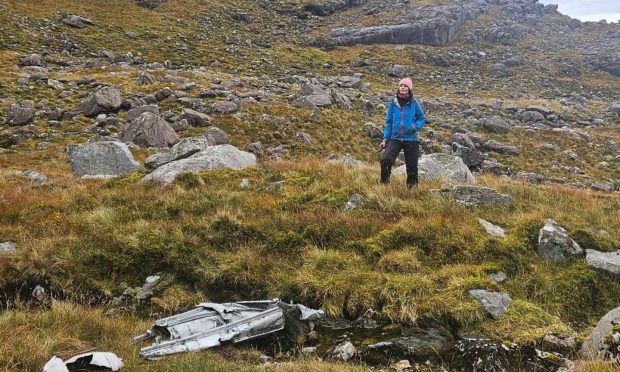
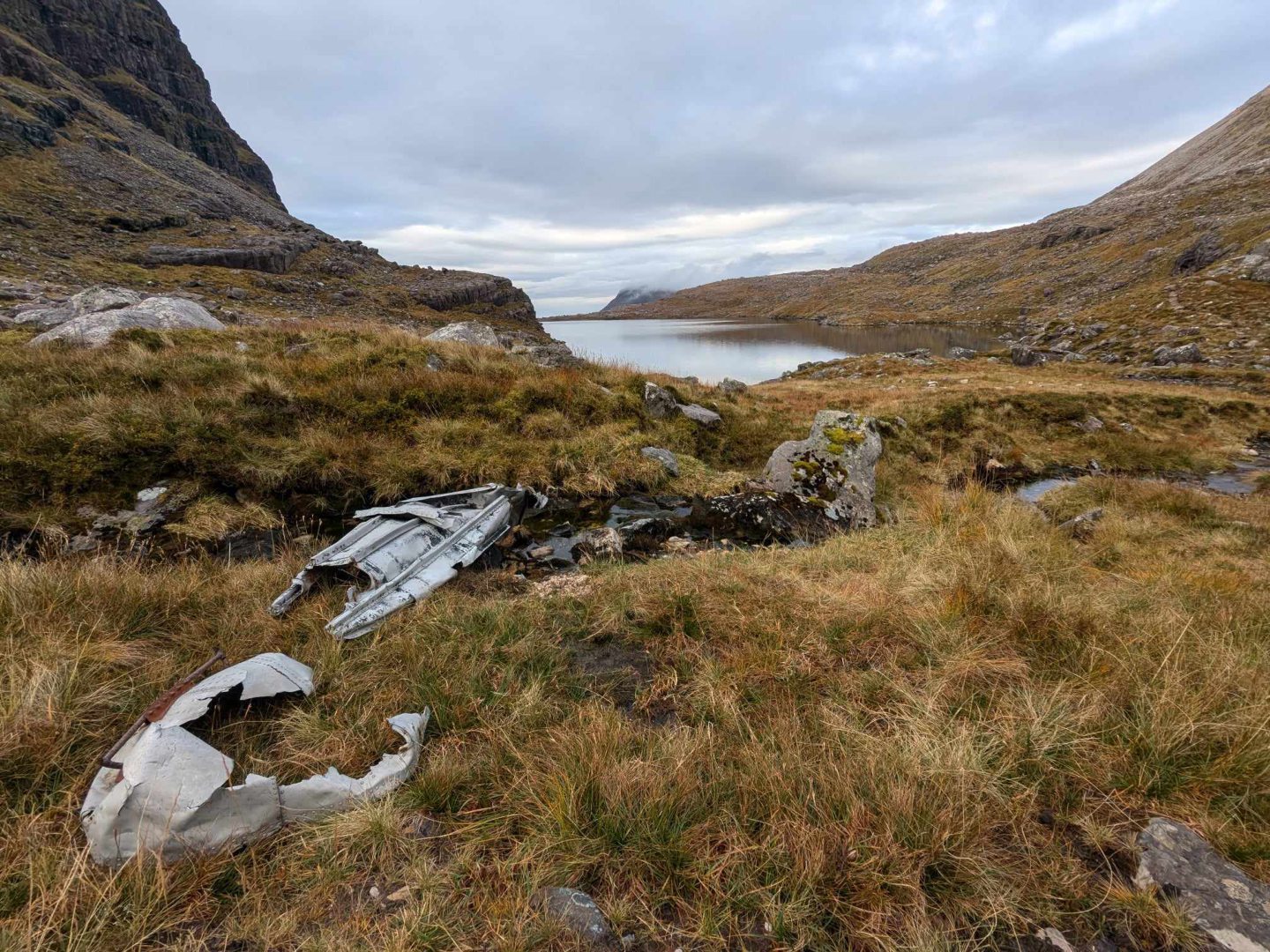
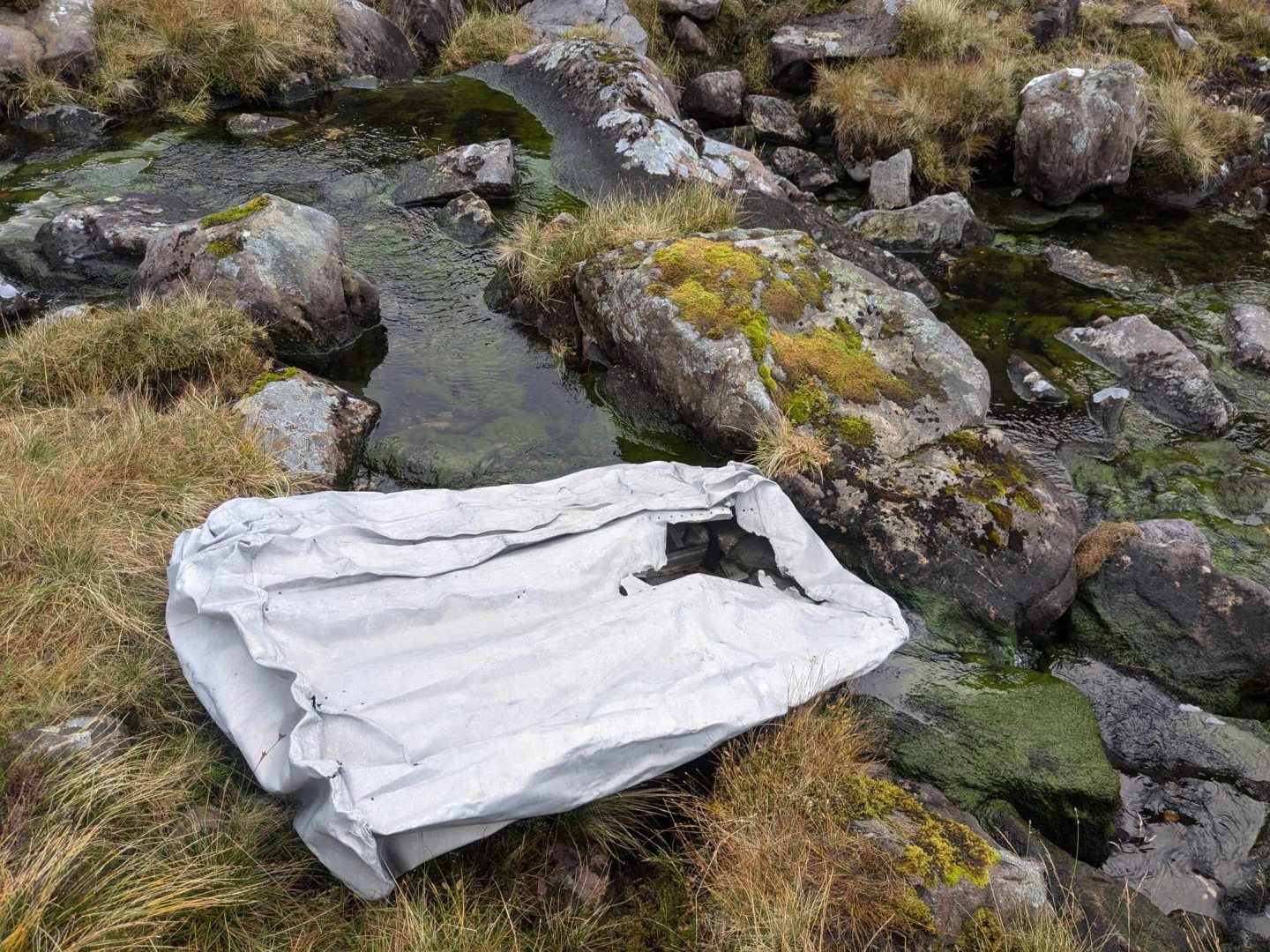
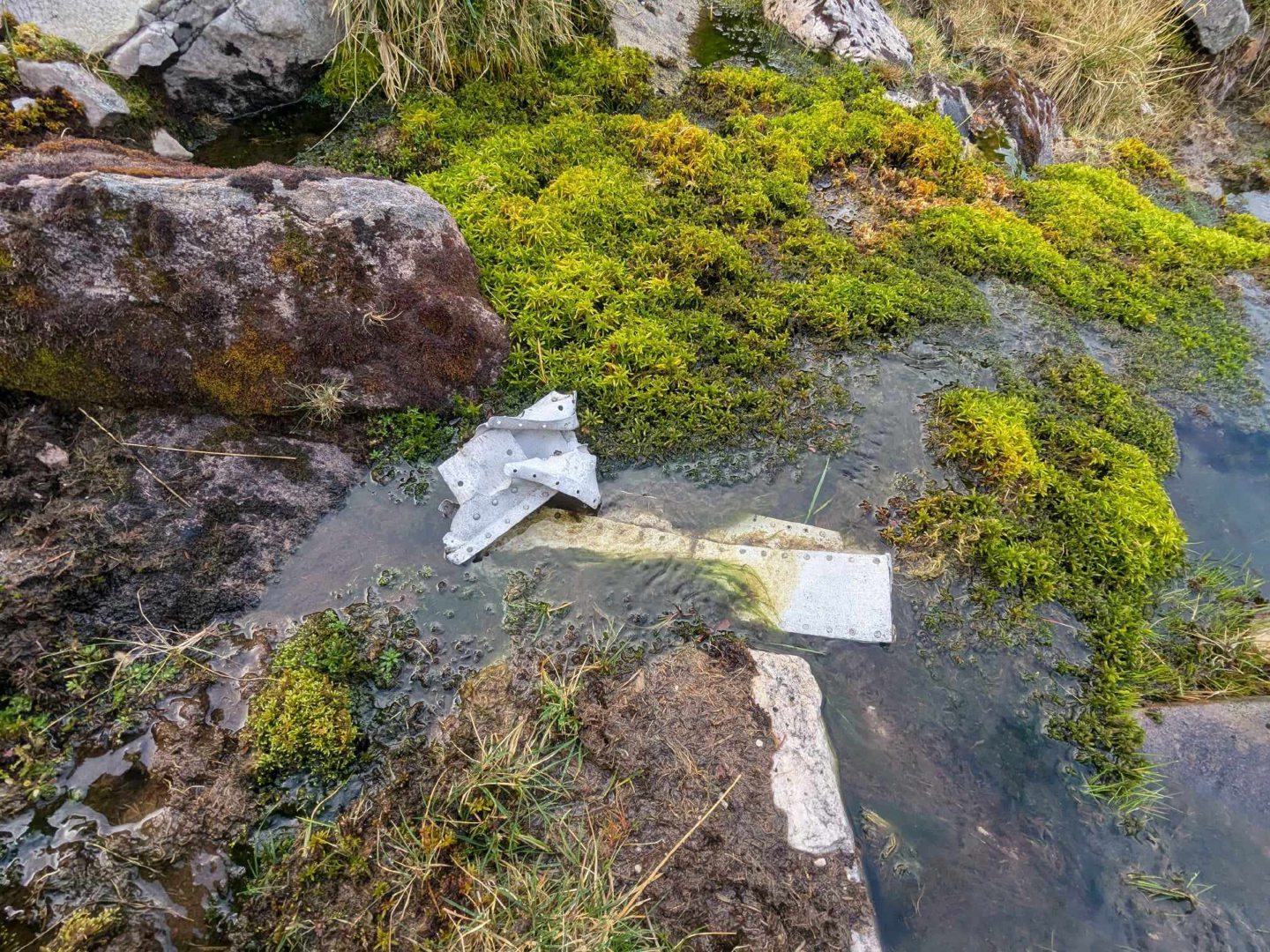
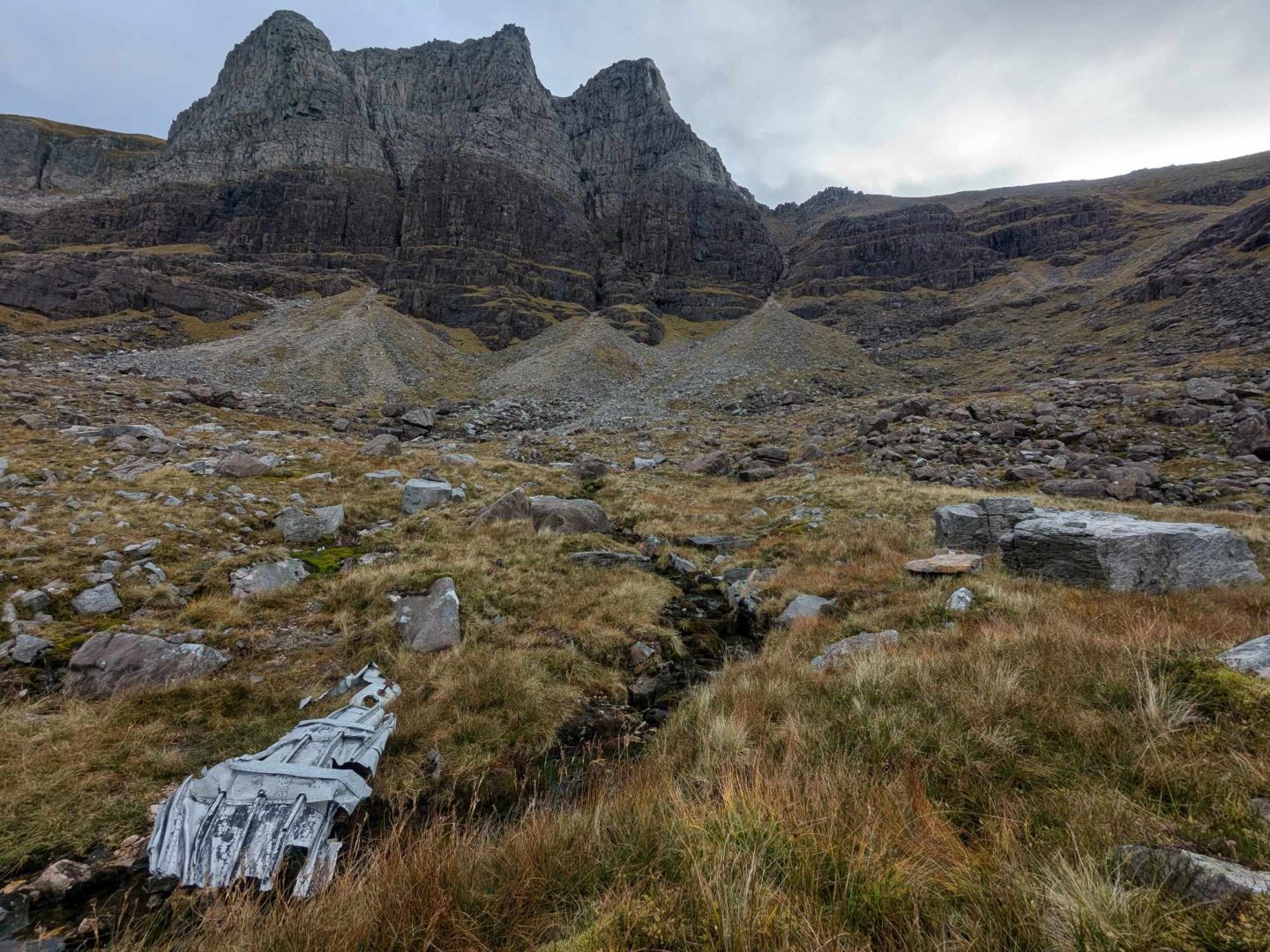
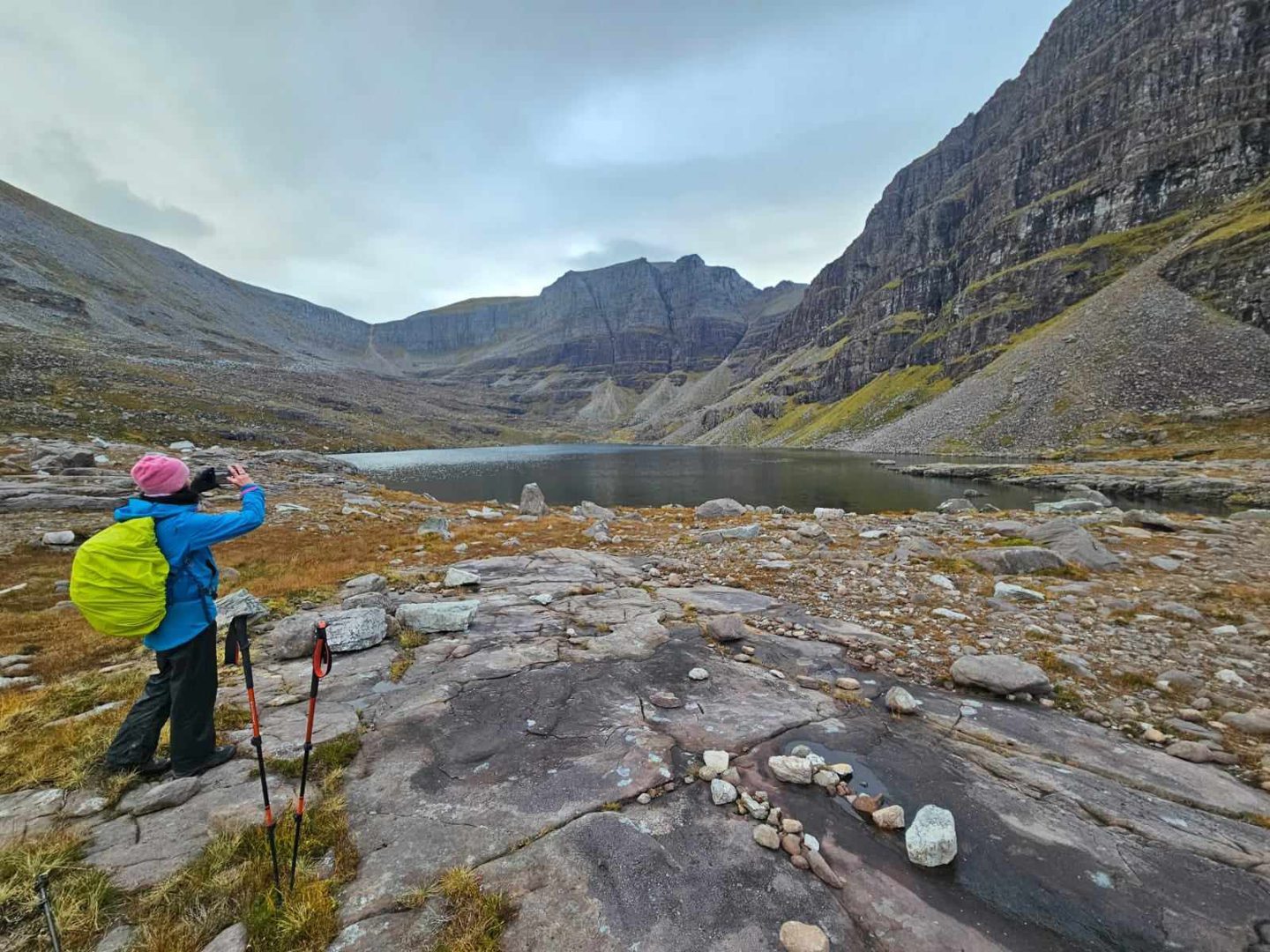
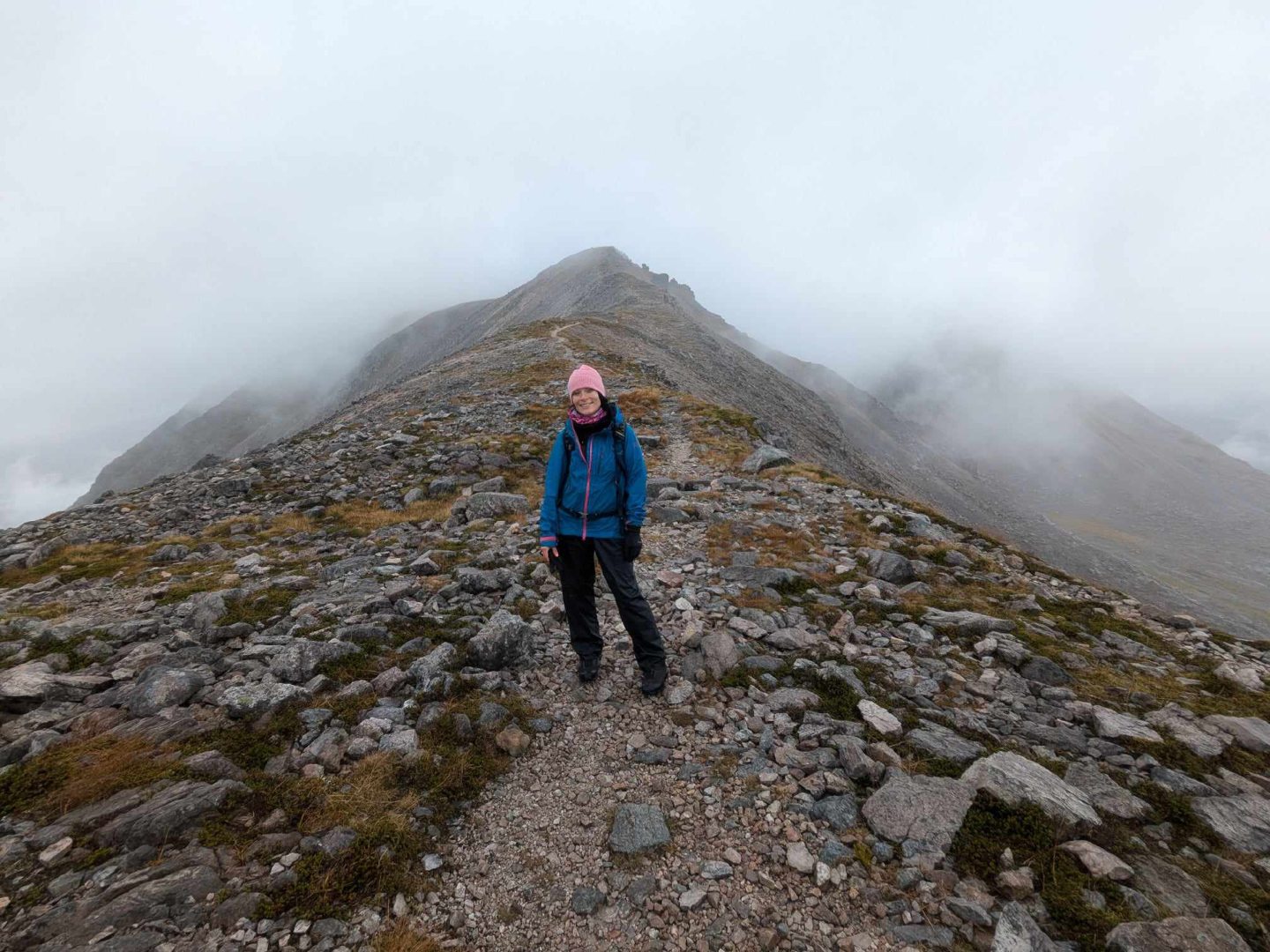
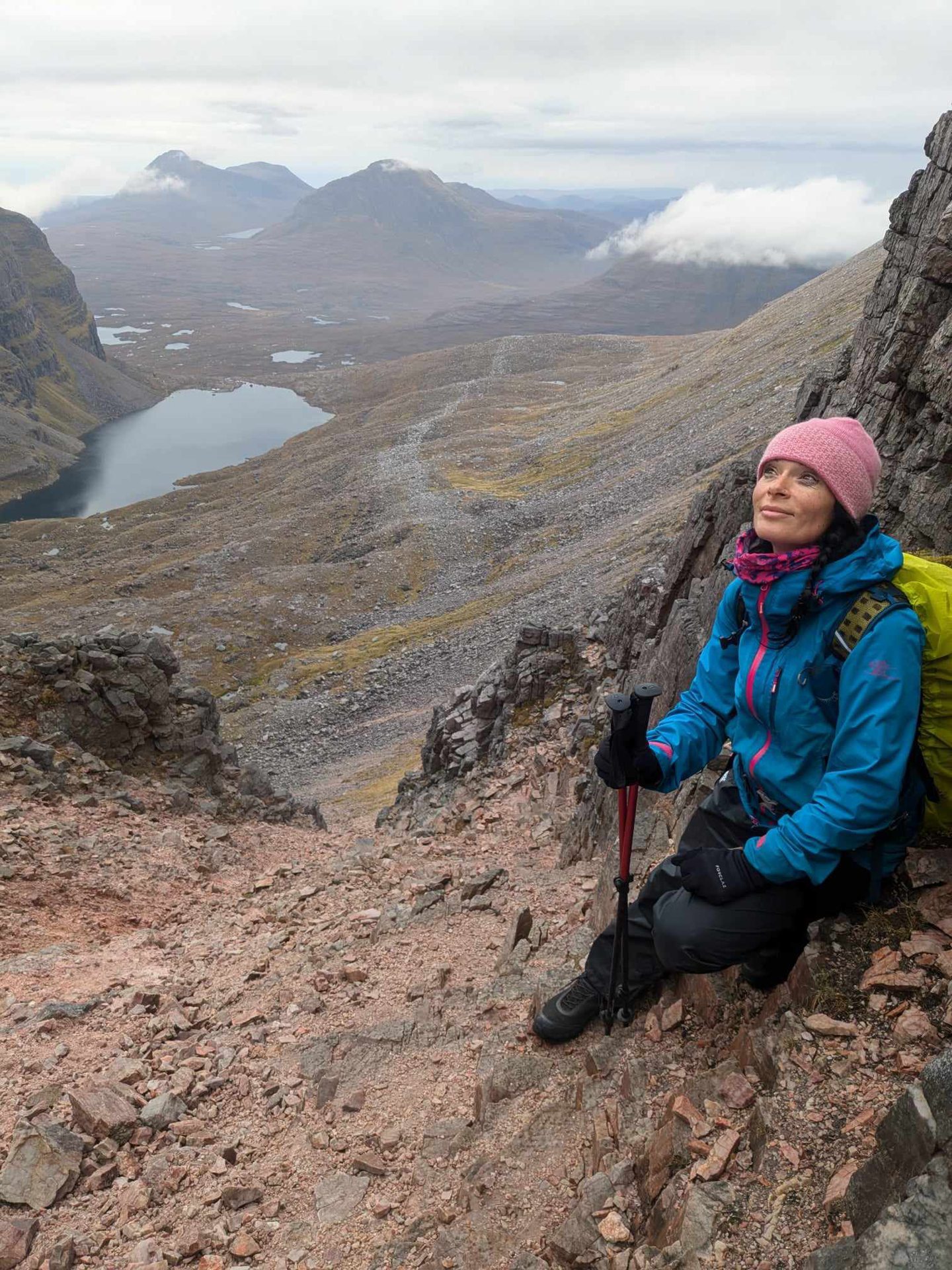
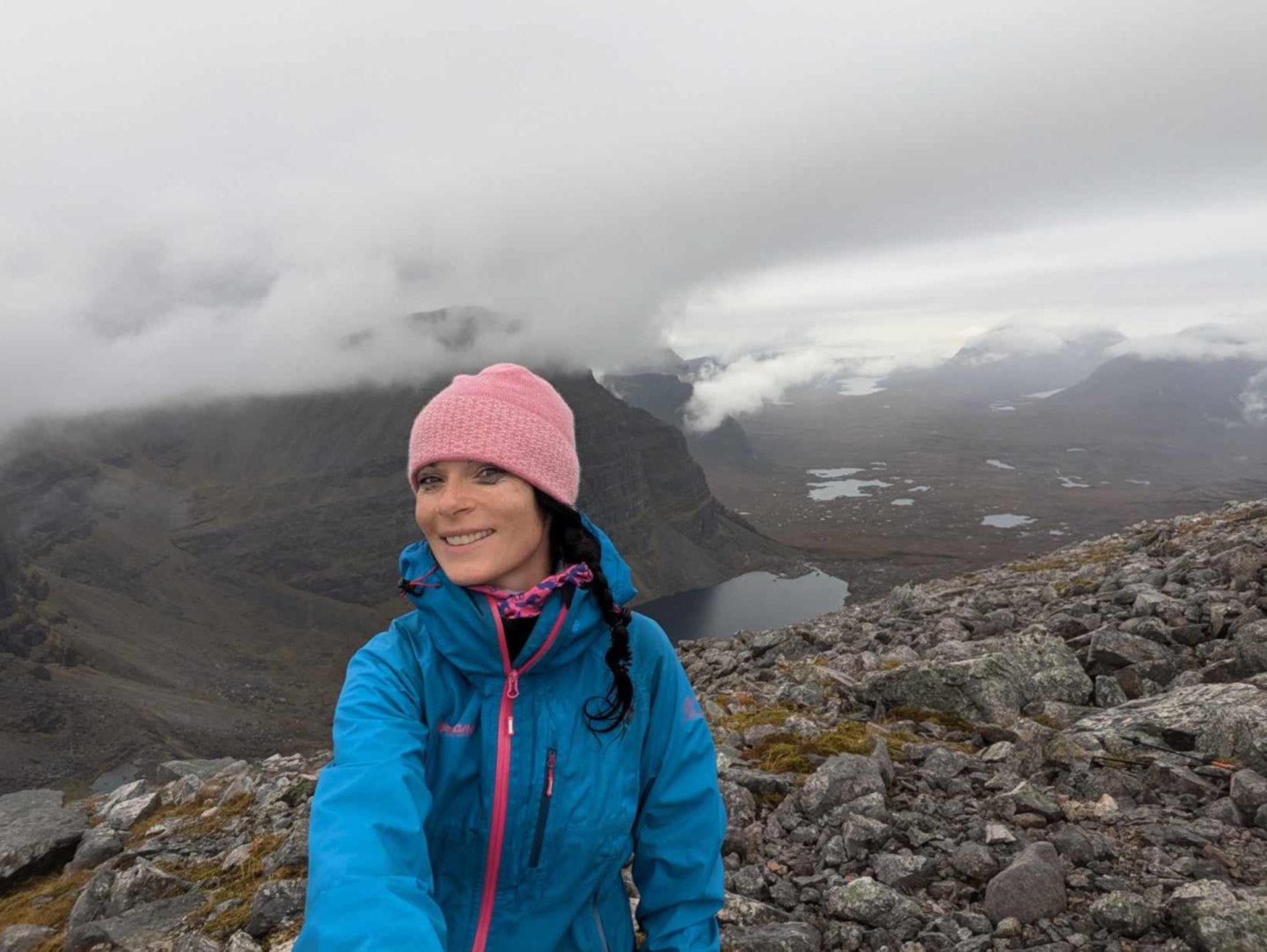
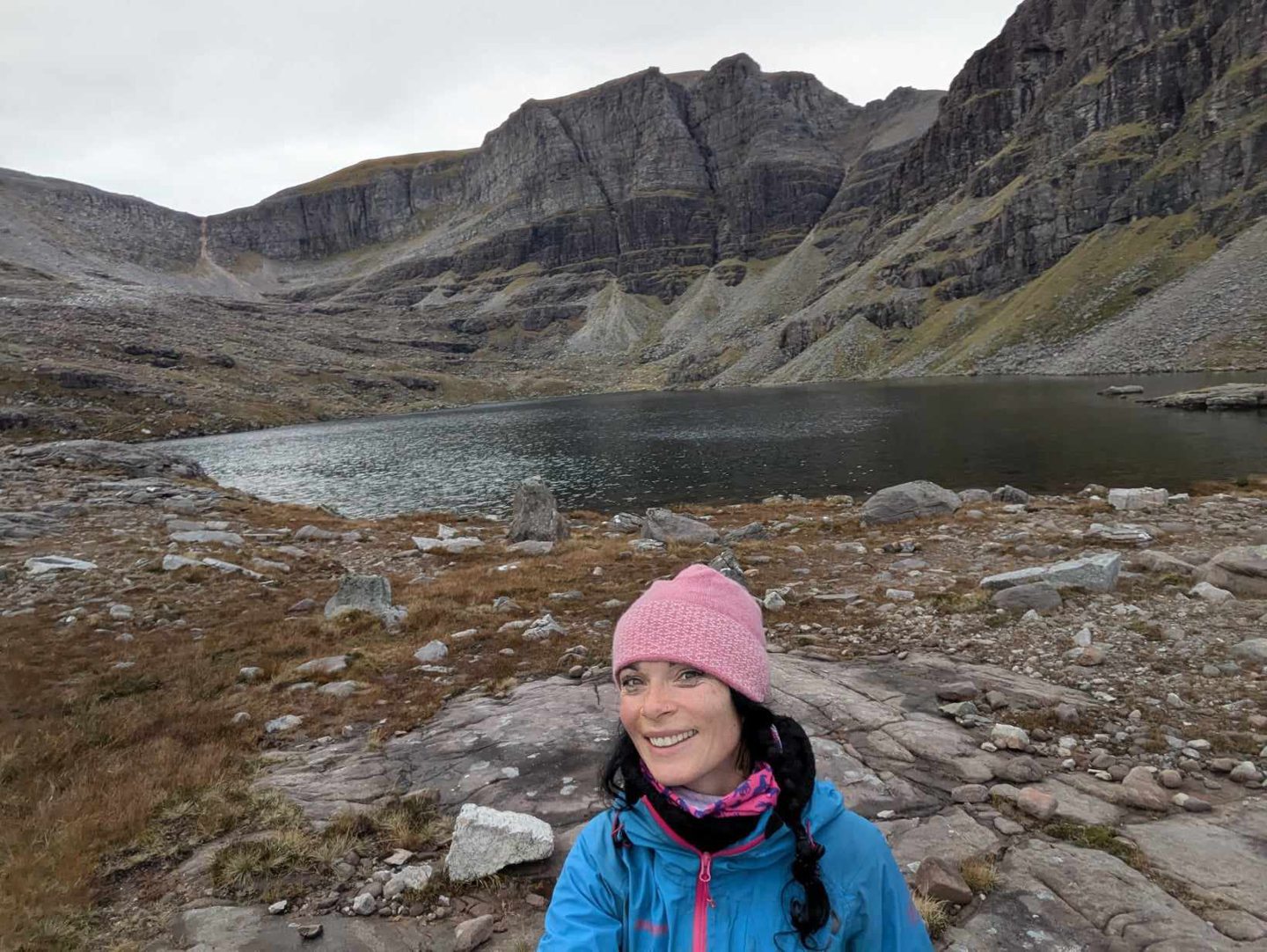
Conversation